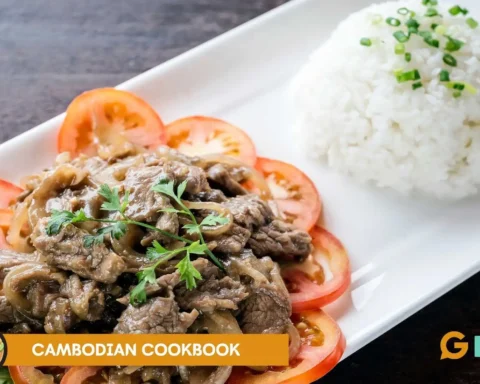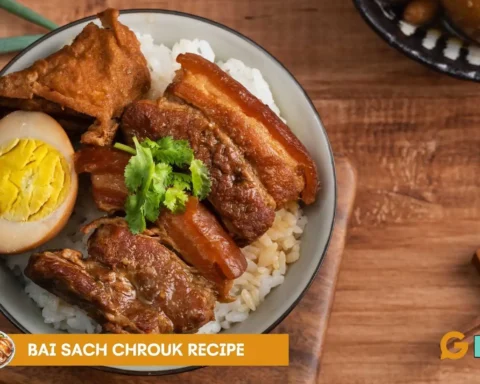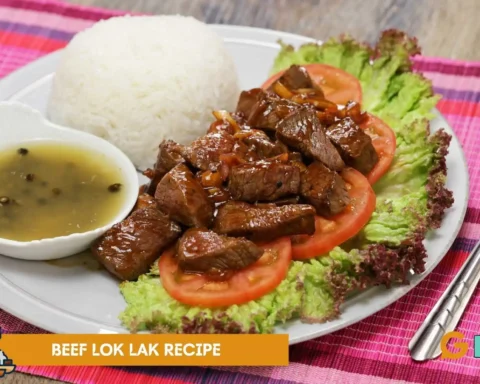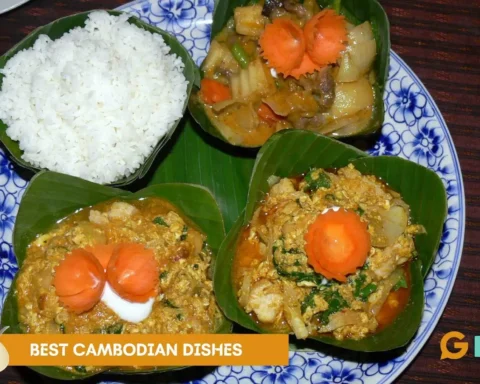Cambodian cuisine, also known as Khmer cuisine, has centuries of history, culture, and tradition attached to it. Tucked between Thailand, Vietnam, and Laos, Cambodia’s culinary identity is often overshadowed, albeit inspired by them, but it holds its own with a distinct balance of flavors and a harmonious blend of different textures and techniques.
Rooted in the Mekong River’s bounty and ancient Khmer Empire influences, Cambodian food offers both delicate and bold flavors. The classic Cambodian recipes are not only categorized by their key ingredients but also have their origins in entrenched historical connotations. Whether it is the iconic Fish Amok or the hearty Samlor Korkor, these dishes tell the story of the Cambodian people through their food.
Table of Contents
The Historical Roots of Cambodian Cuisine
The foundations of Cambodian cuisine date back over a thousand years to the Angkorian era, when the Khmer Empire was one of the most powerful civilizations in Southeast Asia. This era brought about monumental architecture and an advanced irrigation system that enabled the cultivation of rice and other raw vegetables like green beans, bean sprouts, black pepper, bell peppers, and green onion, which still form the backbone of Cambodian food today.
Indian and Chinese traders played a significant role in shaping early Khmer cuisine by introducing spices and noodle-making techniques in Cambodian recipes. For instance, the Indian influence is evident in Cambodian curry pastes and the frequent use of turmeric, while the influence of Chinese cuisine can be seen in noodle soups and stir-fries.
The French colonial period added another layer of complexity. During this time, baguettes, pâté, and coffee culture took root. Cambodian sandwiches, such as num pang, reflect this amalgamation of Khmer and French tastes.

Key Ingredients in Classic Cambodian Recipes
At the heart of every Cambodian dish lies a variety of ingredients that balance sweetness, saltiness, bitterness, and sourness. Unlike its Thai or Vietnamese neighbors, Cambodian food tends to be subtler, focusing more on herbal complexity than intense heat. Some essential ingredients in Cambodian recipes include:
- Prahok – A fermented fish paste that acts as a base seasoning, much like fish sauce in Thai or Vietnamese cuisine.
- Kroeung – A traditional spice and herb paste made from fresh vegetables like lemongrass, galangal, turmeric, garlic, shallots, and kaffir lime zest. Kroeung is the flavor foundation for countless Cambodian recipes.
- Palm sugar – Derived from the sugar palm tree, this sweetener adds a caramel-like richness to both savory, sweet, and flavorful dishes.
- Tamarind and lime juice – The lime wedges are used to give a tart, citrusy edge to sour soups.
- Fresh herbs – Fragrant herbs like mint, holy Asian basil, cilantro, and sawtooth coriander are frequently used to finish dishes with a fresh burst of extra flavor.
- Rice and rice noodles – Staples in almost every meal.
Iconic Cambodian Dishes and Their Stories
- Fish amok – A creamy, steamed curry made with white fish, coconut milk, and a yellow kroeung paste, Fish Amok traces its origins back to royal cuisine, where it was served at court feasts. The Cambodian recipes for this include traditionally steaming it in banana leaf cups and often topping it with thinly kaffir lime leaves and red chilli for garnish. Unlike Thai curries, Fish Amok is milder and more custard-like in texture.
- Samlor Korko – One of the oldest Cambodian soups, Samlor Korko is a rustic, hearty stew made with seasonal raw vegetables, catfish or pork belly, green kroeung paste, and toasted rice powder for texture. This dish was traditionally made in rural households and has been a staple for centuries, offering a snapshot of Cambodia’s agrarian life.
- Bai sach chrouk (Grilled pork and rice) – A beloved breakfast aromatic dish, the Cambodian recipe for Bai sach chrouk consists of thinly sliced pork marinated in coconut milk or palm sugar, grilled to smoky perfection, and served with rice and pickled vegetables. Sometimes, a side of clear broth accompanies it. It showcases how even the most humble ingredients can be transformed into something memorable through careful preparation.
- Nom banh chok (Khmer noodles) – According to legend, nom banh chok was created by a Khmer man named Thon Chey, who introduced the dish while living in China. It is a dish of fermented rice noodles topped with a green fish gravy made from kroueng and coconut milk, garnished with fresh herbs, banana blossom, and cucumbers.
- Lok lak – Lok lak is a stir-fried beef dish marinated in soy sauce, oyster sauce, and Kampot pepper. It is typically served with steamed rice or fries, a fried egg on top, and a dipping sauce made of lime juice and more kampot pepper. This dish is a fusion product of raw beef from the French colonial era, where Western-style beef dishes were adapted to local palates.
- Kuy Teav – A rice noodle soup often enjoyed for breakfast. Kuy Teav features a savory pork broth, noodles made from rice flour, and various toppings. Believed to have originated from China, the soup is garnished with fried garlic, cilantro, green onions, and bean sprouts, adding texture and aromatic flavors.
Street Food and Everyday Eating
Street food is integral to Cambodian culture. Markets and roadside stalls are often where the most authentic, vibrant flavors of the beloved street food dishes can be found. Khmer dishes like fried crickets, grilled frog legs, and ang dtray-meuk (grilled squid on a stick) are common snacks sold by street vendors that showcase the country’s nose-to-tail and root-to-stem eating habits.
The Cambodian recipes for the baguette sandwich, num pang, layer pâté, grilled meat, pickled carrots, and cucumbers into a perfect street meal. Influenced by French colonialism, it also represents how Cambodian cuisine absorbs and adapts foreign elements.
Daily meals in Cambodia are nothing short of culinary treasures. They typically consist of steamed rice, soup, a stir-fried dish, and fresh vegetables or herbs. Meals are communal and emphasize balance and variety rather than courses or extravagance.
Conclusion
Cambodian cuisine is a living reflection of its people’s history, geography, and resilience. Through every bowl of rice noodles or bite of Fish Amok, one tastes centuries of adaptation, survival, and cultural pride. While it shares regional similarities, it also offers a unique identity defined by subtle aromatic herbs, fermentation, and deep-rooted traditions.
As more chefs, travelers, and locals shine a spotlight on these timeless Cambodian recipes, the global appreciation for Cambodian cooking continues to grow. Incorporating simple ingredients such as an assortment of vegetables, grated coconut, lime juice, beef salads, fish sauce, fragrant jasmine rice, steamed rice, and vegetable oil, Cambodian cuisine is a type of Asian cuisine which is characterized by less spice and more subtlety compared to its neighbors. Exploring a nation’s cuisine is more than just its flavor; it is understanding the nation and its heritage.

FAQs
What is Cambodia’s most famous dish?
Cambodia’s most famous and refreshing dish is fish amok, a creamy, steamed aromatic curry made with fish, coconut milk, and a fragrant kroeung paste, offering a combination of flavors to this rich, satisfying dish.
What is the national dish of Cambodia?
Fish amok is often considered the national dish of Cambodia and is a culinary masterpiece of steamed, curried fish. This Cambodian meal has a silky texture and is typically made with freshwater fish, which is abundant in Cambodia because of Tonle Sap Lake and the Mekong River.
What is a traditional Cambodian breakfast?
One of the most popular breakfast dishes in Cambodia is rice porridge called Borbor. It is an extremely affordable Cambodian breakfast dish served with fried dough sticks and a variety of condiments, including red chili sauce, preserved soybeans, pickled garlic, and small pickled chili peppers.









